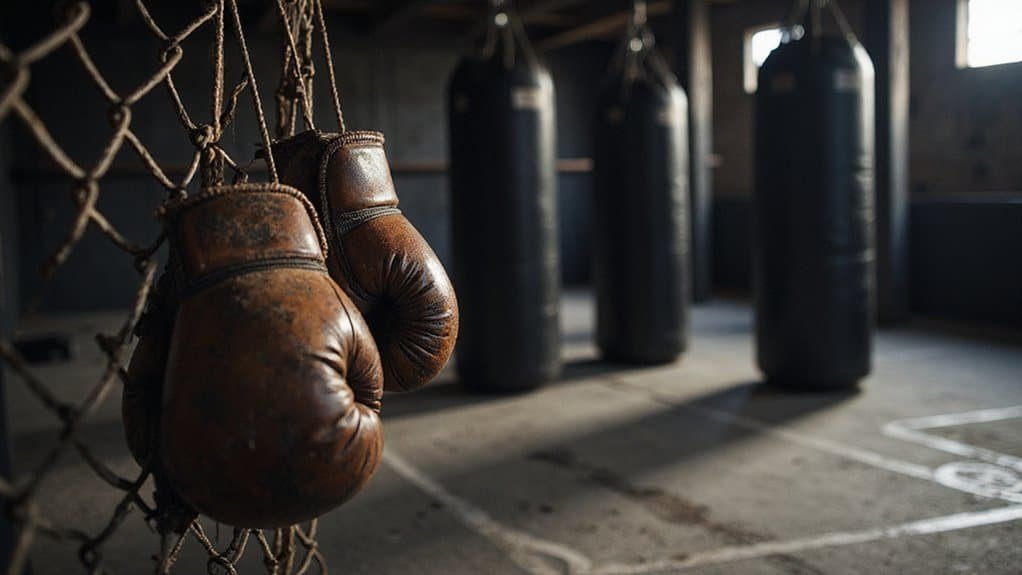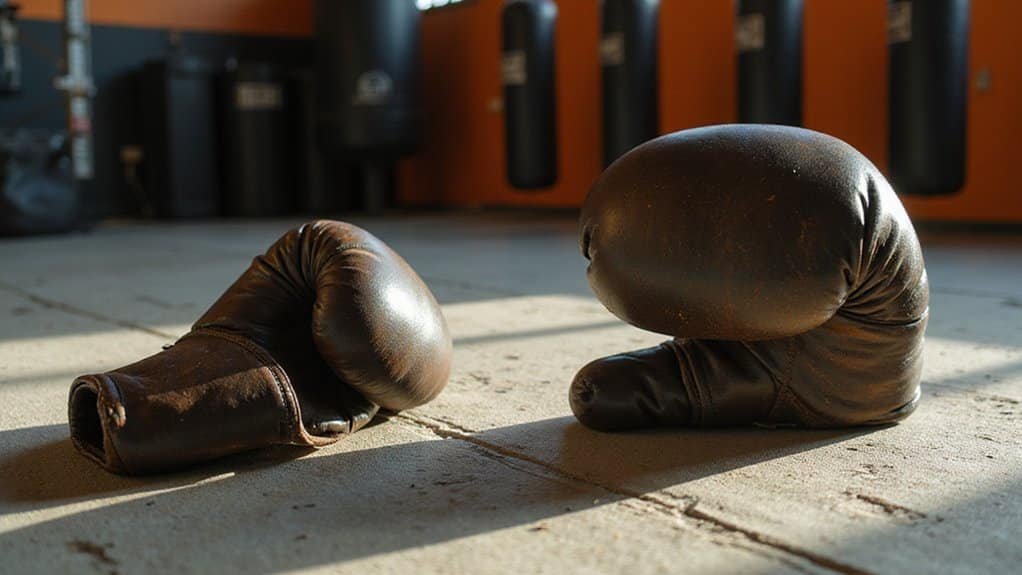Sprawl-and-brawl is a mixed martial arts strategy where fighters use defensive wrestling techniques to stop takedown attempts and maintain striking exchanges. The core technique involves kicking the legs backward and dropping the hips toward the mat when opponents attempt takedowns, effectively counteracting their momentum. This approach allows strikers to dictate fight location while avoiding dangerous ground situations. Chuck Liddell exemplified this tactic with devastating effectiveness. Mastering this technique requires specific training methods and tactical understanding.

In mixed martial arts, fighters face a fundamental choice: engage in grappling exchanges or keep the fight standing where striking reigns supreme. The sprawl-and-brawl strategy represents a tactical approach that firmly chooses the latter, employing defensive wrestling techniques to maintain striking superiority while avoiding dangerous ground situations.
This fighting style centers on the sprawl, a defensive maneuver executed by rapidly kicking the legs backward and dropping the hips toward the mat when an opponent attempts a takedown. The defender’s goal is to land their hips or upper thighs on the attacker’s upper back, effectively blocking forward momentum and neutralizing the takedown attempt. Proper execution requires keeping the knees off the ground while maximizing weight distribution and hip extension for peak leverage.
The sprawl proves most effective against single-leg and double-leg takedown attempts, forcing grapplers to expend significant energy while maintaining the standing position where strikers typically excel. Advanced practitioners incorporate circling movements and angling to create escape routes or further punish unsuccessful takedown attempts. This defensive foundation enables fighters to dictate the location of the fight, consistently returning exchanges to their preferred striking range.
Beyond pure defense, the sprawl position creates offensive opportunities that savvy fighters exploit ruthlessly. Defenders can deliver punches and knees to frustrated opponents, attempt front headlock attacks, including submission holds like the anaconda choke, or shift to dominant positions by controlling ankles or taking the opponent’s back. These counterattacks often demoralize wrestlers while inflicting physical damage. Mastering the art of sprawling becomes essential for fighters who want to establish and maintain control in these crucial exchanges.
Chuck Liddell epitomized this tactical approach, combining lightning-fast sprawls with devastating striking power to dominate opponents who relied heavily on takedowns. His success demonstrated how effective sprawl-and-brawl specialists could be when they possessed the necessary athleticism, timing, and technical precision. Fighters adopting this style typically maintain impressive knockout rates while suffering fewer submission losses compared to those willing to engage in extended ground battles. The Iceman established constant posting on opponents’ shoulders or heads as a crucial preventative measure.
Developing sprawl-and-brawl proficiency requires dedicated training focused on reaction speed, hip mobility, and conditioning. Fighters must drill defensive responses to various takedown attempts while simultaneously honing their striking skills to capitalize on opportunities created by successful sprawls. Mastering the proper staggered stance provides crucial defensive positioning that prevents opponents from closing distance effectively during attempted takedowns.
The combination of wrestling fundamentals with high-level striking creates a formidable fighting style that forces opponents to engage on unfavorable terms. This tactical approach remains a cornerstone strategy for strikers seeking to maximize their advantages while minimizing exposure to grappling specialists.
When appropriately executed, sprawl-and-brawl transforms potential weaknesses into devastating opportunities, allowing fighters to control the pace and location of combat exchanges.
Frequently Asked Questions
What Are the Main Weaknesses of the Sprawl-And-Brawl Fighting Style?
The sprawl-and-brawl style suffers from four critical vulnerabilities.
Elite grapplers eventually break down takedown defense through chain wrestling and varied attacks.
Constant sprawling drains energy, creating late-round susceptibility.
The strike-focused approach limits offensive versatility, allowing opponents to escape danger without being grounded.
Heavy reliance on counterstriking and defense reduces offensive output, potentially losing close decisions to patient, long-range competitors.
Which Famous MMA Fighters Are Known for Using Sprawl-And-Brawl Tactics?
Chuck Liddell stands as the most famous practitioner of the sprawl-and-brawl technique, utilizing elite takedown defense to force striking exchanges and deliver devastating knockouts.
Jose Aldo demonstrated exceptional sprawling while maintaining striking superiority.
Quinton “Rampage” Jackson relied heavily on defensive wrestling to create knockout opportunities.
Mirko “Cro Cop” Filipović and Lyoto Machida also employed these tactics effectively, neutralizing wrestlers while maximizing their striking advantages.
How Long Does It Typically Take to Master Sprawl-And-Brawl Techniques?
Mastering sprawl-and-brawl techniques typically requires two to five years of focused training.
Basic proficiency develops within six to twelve months, allowing fighters to defend takedowns in controlled settings.
Advanced mastery—reliably stopping elite grapplers under fight pressure—demands extensive live practice and sparring exposure.
Prior wrestling experience greatly accelerates the timeline.
Quality coaching, consistent drilling, and regular competition against skilled opponents prove essential for reaching championship-level defensive capabilities.
What Training Equipment Is Essential for Developing Sprawl-And-Brawl Skills?
Essential equipment includes training mats for safe sprawl practice, MMA gloves for striking and grappling, heavy bags for power development, and focus mitts for combination work.
Resistance bands enhance explosive movement while jump ropes build cardiovascular endurance. Protective gear like mouthguards and shin guards enables live sparring.
Training partners remain essential for integrating realistic drills, simulating the chaotic shifts between defensive sprawls and offensive striking combinations.
Can Shorter Fighters Effectively Use Sprawl-And-Brawl Against Taller Opponents?
Shorter fighters can effectively use sprawl-and-brawl against taller opponents by leveraging their lower center of gravity to execute quicker hip drops and improve their takedown defense.
Their compact frame enables rapid sprawl execution and superior leverage during defensive maneuvers.
However, they must overcome their disadvantages through aggressive forward pressure, precise hand positioning for head control, and explosive reactions to neutralize taller opponents’ striking range before takedown attempts develop.

